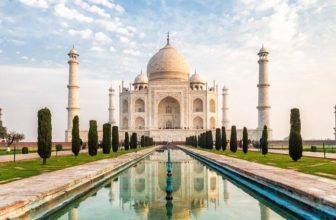Monday Flashback story of Dholavira – Ancient Sustainable City since Harappa Civilisation
This week we present the Flashback story of Dholavira, the archaeological site of a Harappan-era city, which received the UNESCO world heritage site tag on Tuesday. While Dholavira became the fourth site from Gujarat and 40th from India to make the list, it is the first site of the ancient Indus Valley Civilisation (IVC) in India to get the tag.
Dholavira site
The IVC acropolis is located on a hillock near present-day Dholavira village in Kutch district, from which it gets its name. It was discovered in 1968 by archaeologist Jagat Pati Joshi. The site’s excavation between 1990 and 2005 under the supervision of archaeologist Ravindra Singh Bisht uncovered the ancient city, which was a commercial and manufacturing hub for about 1,500 years before its decline and eventual ruin in 1500 BC.
Distinct features
After Mohen-jo-Daro, Ganweriwala, and Harappa in Pakistan and Rakhigarhi in Haryana of India, Dholavira is the fifth largest metropolis of IVC. The site has a fortified citadel, a middle town, and a lower town with walls made of sandstone or limestone instead of mud bricks in many other Harappan sites.
Archaeologist Bisht cites a cascading series of water reservoirs, outer fortification, two multi-purpose grounds — one of which was used for festivities and as a marketplace — nine gates with unique designs, and funerary architecture featuring tumulus — hemispherical structures like the Buddhist Stupas— as some of the unique features of the Dholavira site.
While unlike graves at other IVC sites, no mortal remains of humans have been discovered at Dholavira. Bisht says memorials that contain no bones or ashes but offerings of precious stones, etc. add a new dimension to the personality of the Harappans.
Rise and fall of Dholavira
Remains of a copper smelter indicate of Harappans, who lived in Dholavira, knew metallurgy. It is believed that traders of Dholavira used to source copper ore from present-day Rajasthan and Oman and UAE and export finished products. It was also a hub of manufacturing jewellery made of shells and semi-precious stones, like agate and used to export timber.
Bisht says that such beads peculiar to the Harappan workmanship have been found in the royal graves of Mesopotamia, indicating Dholavira used to trade with the Mesopotamians. Its decline also coincided with the collapse of Mesopotamia, indicating the integration of economies. Harappans, who were maritime people, lost a huge market, affecting the local mining, manufacturing, marketing and export businesses once Mesopotamia fell.
He further says that from 2000 BC, Dholavira entered a phase of severe aridity due to climate change and rivers like Saraswati drying up. Because of a drought-like situation, people started migrating toward the Ganges valley or towards south Gujarat and further beyond in Maharashtra.
In those times, Bisht says, the Great Rann of Kutch, which surrounds the Khadir island on which Dholavira is located, used to be navigable, but the sea receded gradually and the Rann became a mudflat.
Other Harappan sites in Gujarat
Before Dholavira was excavated, Lothal, in Saragwala village on the bank of Sabarmati in Dholka taluka of Ahmedabad district, was the most prominent site of IVC in Gujarat.
It was excavated between 1955 and 1960 and was discovered to be an important port city of the ancient civilization, with structures made of mud bricks. From a graveyard in Lothal, 21 human skeletons were found. Foundries for making copperware were also discovered. Ornaments made of semi-precious stones, gold etc. were also found from the site.
Besides Lothal, Rangpur on the bank of Bhadra river in Surendranagar district was the first Harappan site in the state to be excavated. Rojdi in Rajkot district, Prabhas near Veraval in Gir Somnath district, Lakhabaval in Jamnagar, and Deshalpar in Bhuj taluka of Kutch are among other Harappan sites in the state.
In its release, UNESCO termed Dholavira as one of the most remarkable and well-preserved urban settlements in South Asia dating from the 3rd to mid-2nd millennium BCE (Before Common Era). Since the excavation at the site, the ASI has developed a museum here. Dholavira, a village with a population of around 2,000, is the nearest human settlement at present. Near the ancient city is a fossil park where wood fossils are preserved.








